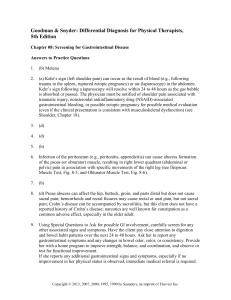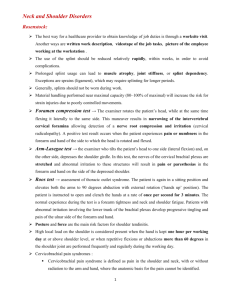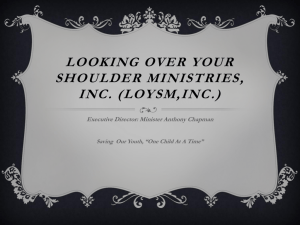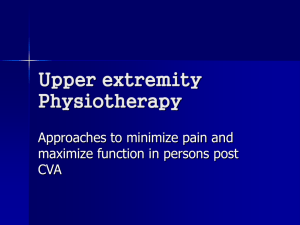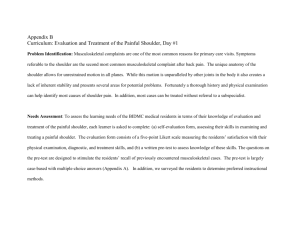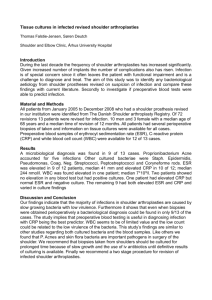Answers for Practice Test Questions
advertisement
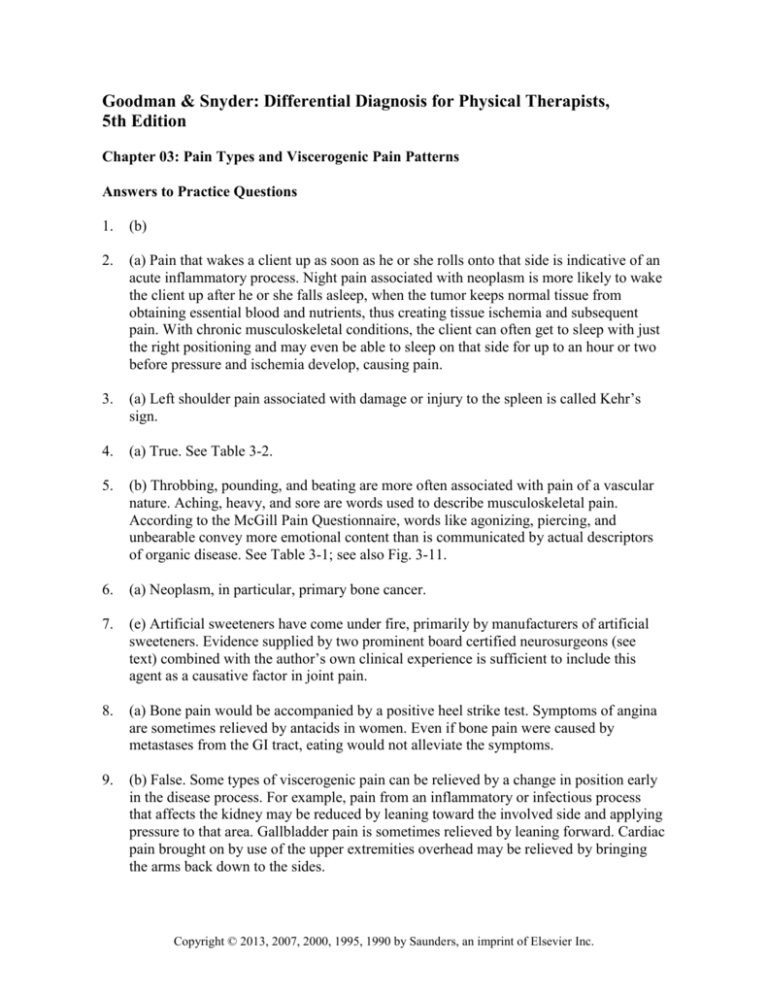
Goodman & Snyder: Differential Diagnosis for Physical Therapists, 5th Edition Chapter 03: Pain Types and Viscerogenic Pain Patterns Answers to Practice Questions 1. (b) 2. (a) Pain that wakes a client up as soon as he or she rolls onto that side is indicative of an acute inflammatory process. Night pain associated with neoplasm is more likely to wake the client up after he or she falls asleep, when the tumor keeps normal tissue from obtaining essential blood and nutrients, thus creating tissue ischemia and subsequent pain. With chronic musculoskeletal conditions, the client can often get to sleep with just the right positioning and may even be able to sleep on that side for up to an hour or two before pressure and ischemia develop, causing pain. 3. (a) Left shoulder pain associated with damage or injury to the spleen is called Kehr’s sign. 4. (a) True. See Table 3-2. 5. (b) Throbbing, pounding, and beating are more often associated with pain of a vascular nature. Aching, heavy, and sore are words used to describe musculoskeletal pain. According to the McGill Pain Questionnaire, words like agonizing, piercing, and unbearable convey more emotional content than is communicated by actual descriptors of organic disease. See Table 3-1; see also Fig. 3-11. 6. (a) Neoplasm, in particular, primary bone cancer. 7. (e) Artificial sweeteners have come under fire, primarily by manufacturers of artificial sweeteners. Evidence supplied by two prominent board certified neurosurgeons (see text) combined with the author’s own clinical experience is sufficient to include this agent as a causative factor in joint pain. 8. (a) Bone pain would be accompanied by a positive heel strike test. Symptoms of angina are sometimes relieved by antacids in women. Even if bone pain were caused by metastases from the GI tract, eating would not alleviate the symptoms. 9. (b) False. Some types of viscerogenic pain can be relieved by a change in position early in the disease process. For example, pain from an inflammatory or infectious process that affects the kidney may be reduced by leaning toward the involved side and applying pressure to that area. Gallbladder pain is sometimes relieved by leaning forward. Cardiac pain brought on by use of the upper extremities overhead may be relieved by bringing the arms back down to the sides. Copyright © 2013, 2007, 2000, 1995, 1990 by Saunders, an imprint of Elsevier Inc. Answers to Practice Questions 3-2 10. (a) True. Visceral involvement can occur without preceding or prodromal symptoms, but most often, associated signs and symptoms are present. Because visceral pain can be referred to the neck, back, or shoulder, the client who experiences gastrointestinal (GI) or genitourinary (GU) symptoms does not report these additional symptoms to the therapist when providing information about the musculoskeletal condition. 11. (d) Irritation of the retroperitoneal space begins when bleeding occurs behind the stomach, most often from a posterior duodenal ulcer. Rupture of the spleen causes Kehr’s sign. The pancreas and low back structures are not formed from the same embryologic tissue. Disease of the pancreas, whether it involves the head, the body, or the tail, can put pressure on the corresponding portion of the respiratory diaphragm, resulting in shoulder or low back pain according to the location of the diaphragmatic irritation. Central diaphragmatic pressure results in referred pain to the ipsilateral shoulder; peripheral involvement of the diaphragm results in low back pain. This can occur in the right shoulder when the head of the pancreas is distended far enough, but it is more likely to affect the left shoulder via disease in the tail of the pancreas. Copyright © 2013, 2007, 2000, 1995, 1990 by Saunders, an imprint of Elsevier Inc.
